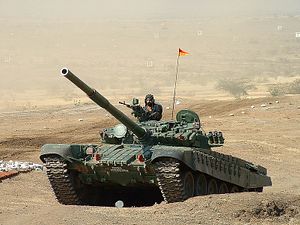Last week, the Financial Times reminded quite a few people of the lingering threat of nuclear war in South Asia. The FT reported on Thursday that on the heels of India’s newfound ease in publicly discussing the long-hyped ‘Cold Start’ doctrine, Pakistan “threatened to use nuclear weapons should India invade.” “If ever our national security is threatened by advancing foreign forces, Pakistan will use all of its weapons — and I mean all of our weapons — to defend our country,” a Pakistani official told the FT.
First of all, for close watchers of the region, a Pakistani reiteration of the country’s first-use nuclear doctrine is roughly a bi-annual occurrence and not a total aberration signaling the imminent prospect of escalation. In fact, one of the more prominent such iteration of the country’s nuclear threat against Delhi came even more recently in September, after tensions between the two sides stood high after the Indian Army suffered its largest-ever casualty attack in more than a decade at the hands of Pakistan-based militants in Uri in Kashmir.
However, the latest Pakistani comments — even if delivered anonymously — do serve an important purpose. As the FT notes in its story, the Pakistani officials specifically discuss the conditions for nuclear use in the context of India’s ‘Cold Start’ military doctrine. I wrote earlier this month on comments made by General Bipin Rawat, India’s new chief of army staff, acknowledging the existence of the doctrine. (A more thorough treatment of Rawat’s comment came out more recently courtesy of Vipin Narang and Walter C. Ladwig at The Hindu.)
‘Cold Start’ has long deeply spooked Pakistan. Developed in the mid-2000s by India to address slow mobilization times during various border crises with Pakistan in the early-2000s, shortly after the Kargil War in the late-1990s, the doctrine, in short, focuses on a rapid-mobilization limited war under the nuclear threshold with Pakistan. The doctrine never acquired formal sanction from India’s civilian leaders over wartime control concerns — until now, apparently.
‘Cold Start’, even without formal political sanction or mention, caused a bit of a stir in Pakistan, understandably. In the mid-2000s, the doctrine was appealing to Indian military planners precisely because it would allow Delhi a sub-nuclear limited war opportunity; Pakistani nuclear delivery capabilities remained strictly in the strategic realm at the time. Islamabad’s concern over ‘Cold Start’ is what led to Pakistan’s pursuit of low-yield battlefield nuclear weapons (also known as “tactical” nuclear weapons).
Pakistan has been growing less shy in discussing its tactical nuclear weapon use plans over time. As I’d discussed back in October 2015, Pakistani Foreign Secretary Aizaz Chaudhary articulated the conditions under which Pakistan would use its tactical nuclear weapons for the first time — specifically mentioning its plans in the context of Cold Start.
So, in the end, there is a bit of new and a bit of old here. Pakistan hasn’t made any important doctrinal changes regarding its plans for nuclear warfare against India and has clarified that Indian mobilization into Pakistani territory under “Cold Start” would be a sufficient trigger for nuclear first use before.

































